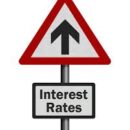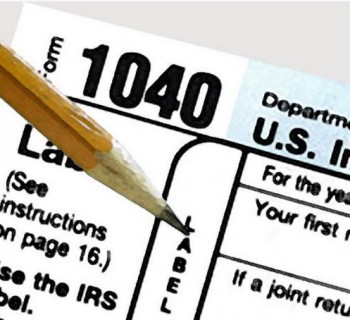 We are currently in the midst of the 2nd longest economic expansion in United States history. According to the National Bureau of Economic Research, the current U.S. expansion would become the longest on record if it continues until July of 2019. Interestingly, it is also the 10-year anniversary since the financial crisis began. Since that time, the banking sector has stabilized, unemployment has declined from 10 percent in 2009 to 3.9 percent today, housing markets have rebounded, corporate profits have risen and in-turn, the stock market has grown.
We are currently in the midst of the 2nd longest economic expansion in United States history. According to the National Bureau of Economic Research, the current U.S. expansion would become the longest on record if it continues until July of 2019. Interestingly, it is also the 10-year anniversary since the financial crisis began. Since that time, the banking sector has stabilized, unemployment has declined from 10 percent in 2009 to 3.9 percent today, housing markets have rebounded, corporate profits have risen and in-turn, the stock market has grown.
As a result, some analysts believe that some sectors of the economy may be approaching bubble territory. Housing affordability hit its worst level in nearly a decade during the first quarter, (Attom Data Solutions), the stock market has reached record highs and current stock market valuations as measured by the cyclically adjusted price to earnings (CAPE) ratio are also high by historical standards. (You have to go back to the technology bubble of the last 90s for a higher CAPE ratio.)
With valuations on the high side and the economic expansion on the long side, the question is – when and how will this expansion come to an end? (After all, economic expansions do not last forever.) After years of boom/bust cycles, many financial analysts have developed signals that they believe are indicators of the potential for an upcoming recession.
So, what are some of the recession signals to watch?
Yield-curve inversion
The yield curve is simply a graphical representation of the yield or interest rate on similarly rated bonds with varying maturities. The most commonly watched yield curve is the plotting of 3-month, 2 year, 5 year, 10 year, 20 year and 30 year government bonds. A normal yield curve is one where short-term bonds such as a 2-year bond would typically have a lower yield than a longer-term bond such as a 10-year bond. Generally, investors want to be rewarded for the greater risk associated with waiting a longer time period to be repaid for their principal. However, when the Federal Reserve raises short-term interest rates to combat inflation or an over-heated economy, the yield curve can start to flatten or even invert. An inverted yield curve occurs when short-term bond yields are actually higher than long-term bonds.
Why does the yield curve matter? With the exception of a few cases, the yield curve has inverted before most recessions in history. While the yield curve has not inverted yet, some analysts believe that a few more rate hikes by the Fed could result in this occurrence.
An inverted yield curve is not a perfect signal as it does not guarantee recession and it may occur a year or two before recession - so it can be an early indicator. In fact, Ryan Detrick, senior market strategist at LPL Research, noted that during the past five recessions, the market didn’t peak for more than 19 months on average after the yield curve inverted.
Leading Economic Index (LEI)
The Conference Board’s Leading Economic Indicators (LEI) is another tool used by many economists and analysts when assessing the likelihood of recession. Manufacturing new orders, initial applications for unemployment insurance, new building permits, stock prices and consumer sentiment are just a few of the 10 economic components that comprise the index and are often used to forecast the direction of future economic changes. The last release of data in August from the Conference Board suggested that the index increased in the month of July. According to Ataman Ozyildirim, Director of Business Cycles and Growth Research at the Conference Board, “The strengths among the components of the leading index were very widespread, with unemployment claims, the financial components, and the ISM® New Orders Index making the largest positive contributions.”
Why does the LEI matter? The longer-term trend in the LEI is especially important, as the index has turned negative year over year before every economic recession since the 1970s. While the LEI index is used by many analysts, it is also tends to be an early indictor. In fact, according to Putnam Investments, the LEI signal has historically had an average lead time of nearly six months. The next LEI release is expected in the coming week.
How to prepare
While these are simply two of many economic indicators to watch, consistently predicting future movements in the economy or market are nearly impossible. Rather than attempt to “time the market”, it is important to focus on your “time in the market”. In particular, it may be a critical time in this cycle for investors to examine whether their portfolio remains in alignment with their goals, income needs and time horizon. When was the last time you assessed your risk? Do you have a time horizon that is long enough to allow sufficient time to account for future volatility? Is your portfolio in alignment with your life? Do you have sufficient cash reserves to help weather future economic storms? Are your personal debt levels in manageable territory?
Unfortunately, recessions occur periodically over time. After all, expansions do not last forever. A recent assessment by Pimco notes “While recession indicators are not flashing a red warning signal that a downturn is imminent, which would imply a retreat to a defensive position, they are flashing a yellow ‘caution’ signal.” Since everyone’s situation is unique, consider speaking to your tax and financial advisers to determine the most appropriate financial planning approach for you.
Kurt J. Rossi, MBA, CFP®, CRPC®, AIF® is a CERTIFIED FINANCIAL PLANNERtm Practitioner & Wealth Advisor. He can be reached for questions at 732-280-7550, kurt.rossi@Independentwm.com, www.bringyourfinancestolife.com & www.Independentwm.com. LPL Financial Member FINRA/SIPC.









